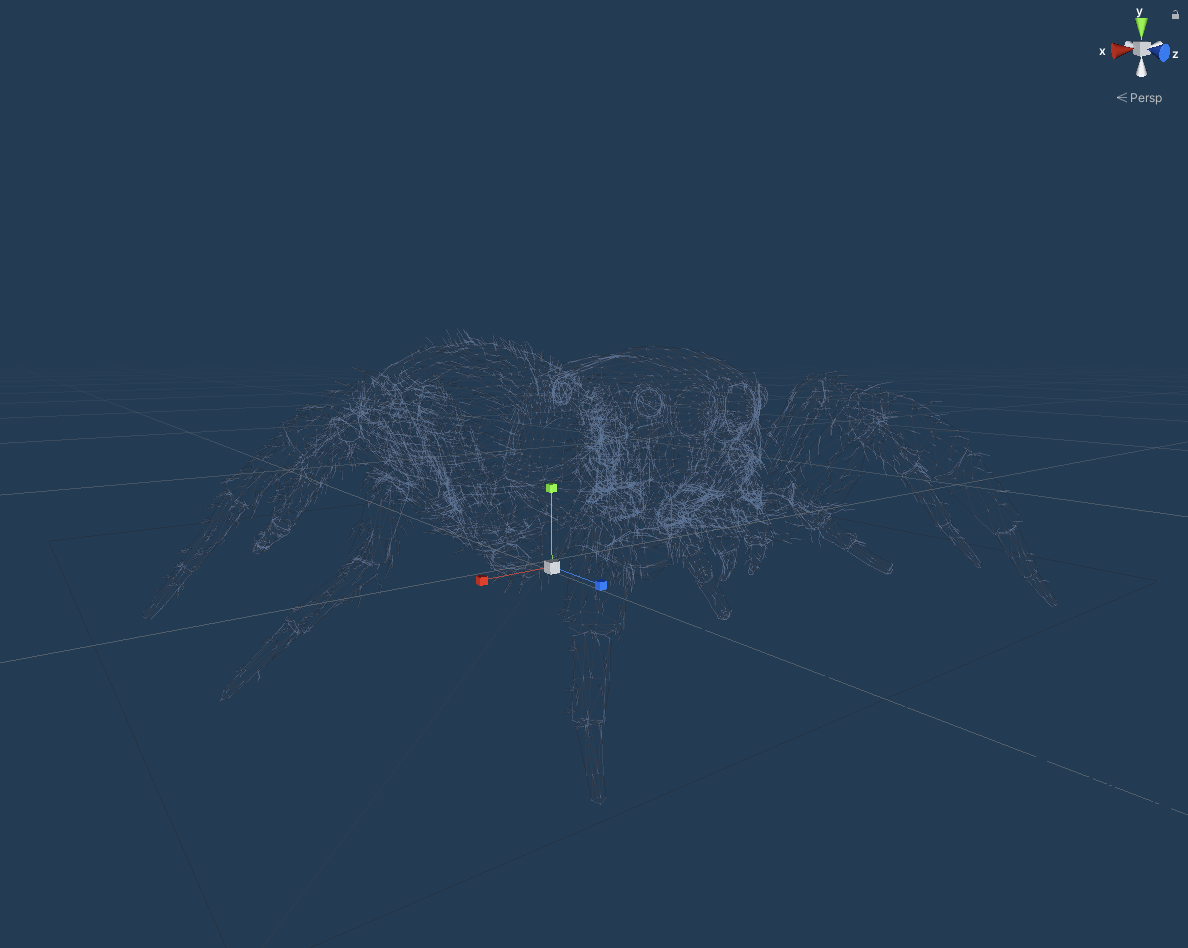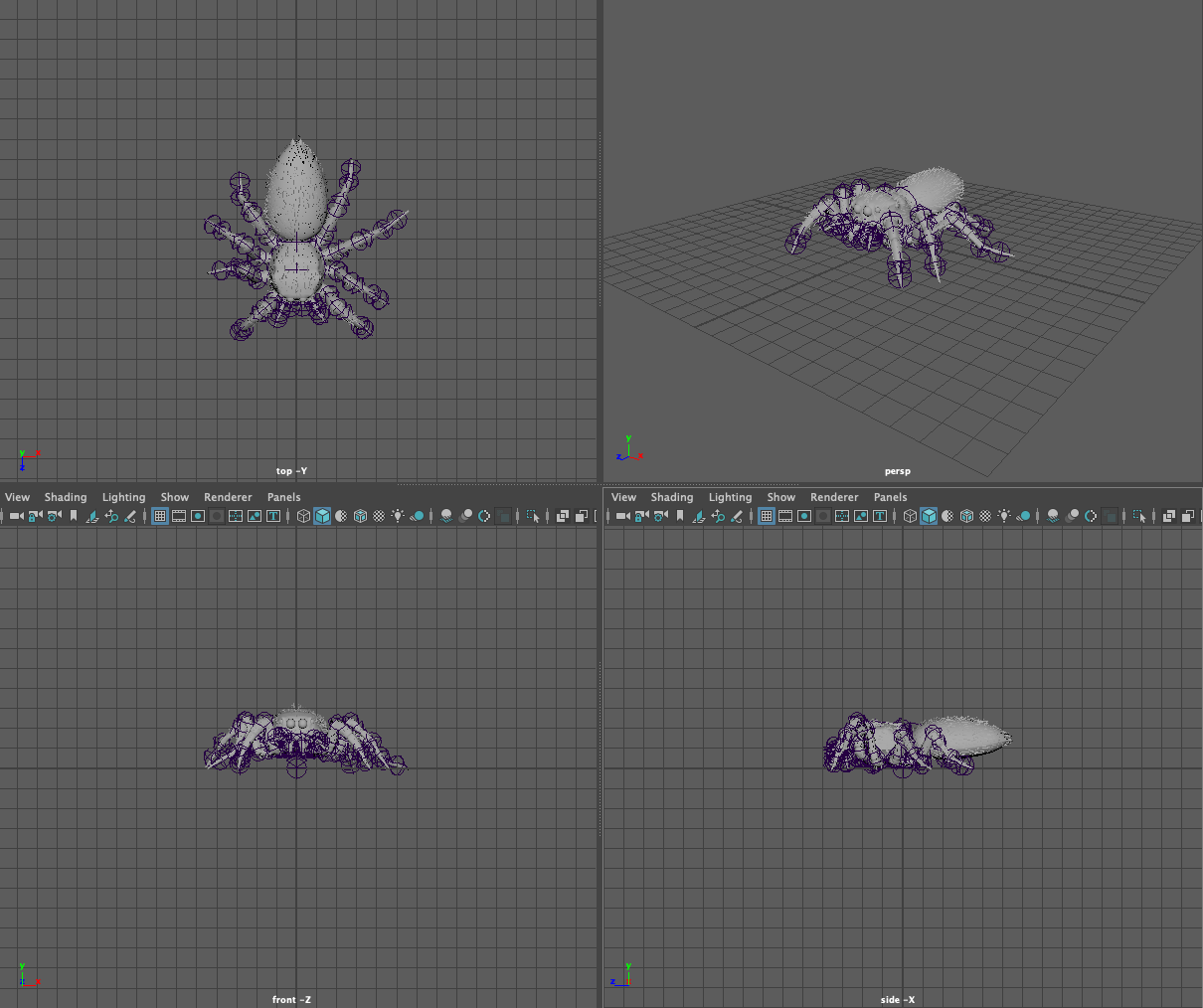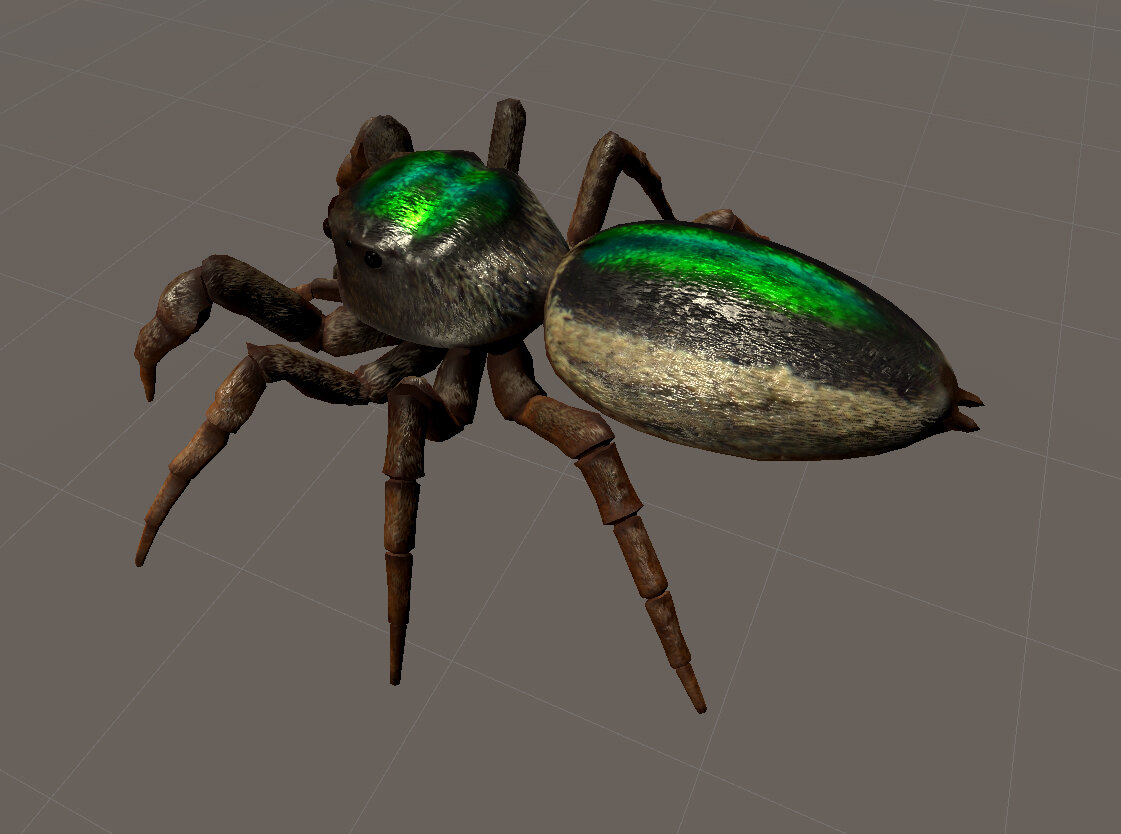by Ally Bisshop
When Johann von Goethe wrote his 1790 treatise on the metamorphosis of plants,[1] he invited us to read in the form of a plant the signs of its endless movements—its growth, its transitions. These morphological drifts are written not only in the shape and curl of the plant’s limbs or body, but in its skin: the texture of a stem, the gloss of a leaf, the burls or knots in a slip of bark. Sometimes read as proto-evolutionary theory (before Darwin), Goethe’s ideas about biological differentiation indicate an ecological vision of ‘natural’ life, in which:
‘we will see the whole world of animals as a great element in which one species is created or at least sustained, by and through another. We will no longer think of connections and relationships in terms of purpose and intention; we will progress in knowledge alone through seeing how formative nature expresses itself from all sides and in all directions’.[2]
Via the revolutionary endosymbiotic theories of Lynn Margulis,[3] contemporary scientific theory has indeed rewritten evolution as a relational process of inter-organismic fusion, ingestion and metabolic inversion—with evolutionary biologist Scott Gilbert recently suggesting that perhaps nature selects for relations, rather than individuals.[4]
There’s a particular plant whose skin tells a tale of symbiotic relations, and of the co-evolutionary metamorphoses they propose. This plant is Vachellia, a myrmecophyte better known as an ant-acacia tree, native to the dry tropical forests of Central America. The skin of this tree is gnarled with swollen stipular thorns: spiny hollow structures called domatia, which provide shelter to the colonies of Pseudomyrmex ants that live upon and within this tree’s surface. In this symbiotic mutualism, the acacia plant provides its ant residents with both structural protection and succour, via the nutrient-rich Beltian bodies that form at the tips of its leaves, thick with fats and sugars upon which the ants feed. In turn, these ants protect the acacia tree by swarming and attacking any herbivorous insect or animal with designs to feed upon it. Where other acacias express bitter alkaloids in their leaves to deter herbivorous predation, this epidermal ant-plant mutualism allows the Vachellia plant to outsource a defensive function to its vigilant insect symbionts.
But! Symbiosis is not always a conversation between only two actors. Another creature is a covert companion[5] within this cross kingdom, plant-invertebrate relationship. That creature is Bagheera kiplingi, a small and agile jumping spider who also makes its home on the dermis of the Vachellia tree. This spider has an extraordinary ethological caprice: it subsists almost entirely on plant proteins drawn from the same leaf-tip bodies upon which the Pseudomyrmex ants also feed, leading B. kiplingi to be dubbed the world’s first, and as yet, only, ‘vegetarian spider’.[6] Unlike the ants with whom it shares arboreal territories, B. kiplingi does not return obvious (that is, scientifically observable) benefits to the Vachellia plant. Its interjection into this mutualistic ant-plant symbiosis is therefore labelled an opportunistic ‘exploitation’, wherein the spider stealthily eludes patrolling ants in order to ‘steal’ the nutritious plant proteins that these ants guard. However, to apply such terms to this spiderly relation seems to us to take an extraordinarily transactional view of interspecies collaboration! We cannot presume an absolute knowledge of the wider affective and ecological circulations of this spider’s movements and presence upon this particular ant-acacia tree. Even as they adopt radically new behaviours, it seems, spiders struggle to escape the raptorial designations afforded to them.

Bagheera kiplingi (vegetarian spider), 2020
Courtesy of the artist and Acute Art.
Spiders are seen as archetypes of predation. This predatory trope is written not only culturally, but biologically—the physiology and digestive anatomy of spiders is specialised for their insect diet, allowing for the external digestion of the insect bodies on which they feed. Given these metabolic and ethological coordinates, the apparent switch to vegetarianism in Bagheera kiplingi is surprising. Viewing this through the skin of symbiotic theory, however, Bagheera’s dietary slippage might be read as an argument against biological determinism; suggesting a variation which reflects the ecological influences that shift and rearticulate the morphologies of bodies in relation. Categorical classifications of life sometimes read like a script—a way not so much to understand life’s differentiations, but to shore up its boundaries, to re-establish the edge between us and them. We wonder, what does it mean to carve such categorical and political lines between domains of life, between plant, animal and microbial bodies, when symbiosis has made ‘messmates’[7] of us all? What would it mean to think of skin as something that does not contain and separate bodies, but which affectively and sensorially mediates transcorporeal encounters?
The remarkable story of Bagheera kiplingi unfolds yet more surprises, more perturbations of mechanistic logic. As this spider shifted from hunting and insect predation to foraging on plant products, its social behaviour also seemingly transformed. Where jumping spiders are usually solitary and aggressively territorial, Bagheera kiplingi spiders live in high densities on fecund acacias, with hundreds of spiders having been observed living together on a single Vachellia tree in a quasi-social cohabitation. This prompts the question, could vegetarianism—or at least, a movement away from hunting and predation—open pathways to new forms of sociality?[8] Recent research seems to suggest some validity to this idea. A paper appearing in June of this year suggests that, among human animals, vegetarians tend to be more ‘pro-social’ than their omnivorous colleagues, and hold more liberal political views.[9] However, the researchers also described the vegetarians in their study as having a tendency toward neuroses, depression and anxiety. Are these poor mental health outcomes a function of a vegetarian metabolic schema? Or rather, as the researchers themselves propose, do these psychological indicators arise from the social identity of vegetarians as cultural minorities? Does ‘pro-sociality’ render us more sensitive to the despair of a world beset with social inequality?

In Ursula le Guin’s The Carrier Bag Theory of Fiction, she urges us to abandon the imperial narrative trope of the heroic warrior that populates so many of our world-making stories. Speculating on the great mammoth hunts carried out by prehistoric peoples, Le Guin offers the pithy observation: ‘It wasn’t the meat that made the difference. It was the story’.[10] Stories, she argues, are not pedestals for warrior-figures, but are baggy, cultural technologies for gathering ideas and holding them in relation. In this contemporary moment of ecological urgency, if we wish to reframe extant stories about life (and the ways of being and becoming they give rise to), we need to surrender the techno-heroic myths of the warrior in order to unearth ‘the other story’ that sits in the bag beside it. Conflicts and competition, the hunt and the battle are part of the story, but not its whole. Reading Le Guin’s theories in relation to Bagheera kiplingi prompts us to think about the stories that this unheroic vegetarian spider proposes: the parallel tales of innovation, ‘theft’, stealth and improvised cooperation that are also part of the processual thrust of mutual coevolution.
Bagheera kiplingi aside, spiders are consummate carnivores. Collectively, spiders consume twice as much animal protein as humans, devouring up to 880 million tonnes every year. Nonetheless, their predominantly insect diet casts a much shorter ecological shadow than that of Western intensive livestock farming practices. The insects upon which spiders feed produce 80 times less methane per kilogram of body weight than cattle, making them a much more ecologically sound source of animal protein than beef or pork.[11] However, the global perseverance of insects is threatened by a number of practices associated with anthropogenic climate change, not least of which being pesticide and herbicide use in crop-based agriculture, the cultivation of monocultures, and conversion of complex and biodiverse vegetal ecologies into grass pastures for grazing livestock.[12] As the metabolic axes of our diets narrow and intensify, their ecological effects swell; a wave lapping hungrily at all that it touches.
As political scientist James C. Scott reminds us, the monocultures that dominate agricultural landscapes are not only more fragile than biodiverse ecologies, they are also material expressions of a violent and totalising logic that would refashion nature as a ‘commodity machine’.[13] A mechanistic and commodified idea of ecology is buttressed by the Anthropocentric myth of an ontological separation between us and an othered, programmable nature. Undoing these arbitrary bifurcations and rediscovering the threads of our inextricable interconnectedness is at the heart of the work of scientist and eco-activist Vandana Shiva. Shiva’s early scholarship in quantum physics led her to the idea of non-separability: the interconnectedness of all things, at organismic, ecological, sociocultural and planetary levels. And, for Shiva, an awareness of this interconnection must fundamentally underscore our approaches to agriculture and food. She argues that the hegemony of industrial agricultural practices—undergirded by a colonial vision of nature—are at the root of chronic non-communicable disease, and myriad forms of social and ecological violence. Cultivating sustainable, biodiverse agricultural practices therefore offers a pathway to planetary healing. The diversity that she advocates is multi-scalar, connecting with both landscape and self—where eating sustainably produced and genetically diverse food allows us to “cultivate the wilderness of our microbiome”. To shift the thrust of our relationship to food and ecology, however, requires real change. “We need a new paradigm for living on the earth”, Shiva writes, “because the old one is clearly not working”.[14] Perhaps, we speculate, the metabolic metamorphoses of Bagheera kiplingi offer cues for paradigmatic change.


Bagheera kiplingi (vegetarian spider), 2020
Courtesy of the artist and Acute Art.
As a spider grows, its body outruns its skin. Most adult spiders will have moved through multiple metamorphic passages in which they shed their carapace to release the fresh and chitinous skin that rests folded beneath. The older the spider becomes, the more deleterious the molting process. Ageing spiders can lose limbs, or even perish, in this violent regenerative flux. But shed they must.
As with spiders, ‘we’ humans—if it is indeed possible to speak of a collective we: this anthropos at the heart of the Anthropocene—‘we’ also must shed old skins, old stories, old practices, in order to invent new ones. We need to cast off the skin that guards and separates us from our multispecies messmates, so that we might locate new, sym-poietic[15] practices for thinking-with, becoming-with, becoming-otherwise. Attuning with spiderly Umwelten is, we argue, one such proposition for collective regenerative praxis. This proposition is at the heart of Arachnophilia: an interdisciplinary, research-driven initiative that emerged from Studio Tomás Saraceno’s adventures with spider/webs. Arachnophilia works collaboratively to invent speculative and affective tools and practices for interspecies communication, and for cultivating new forms of attention to, and care for, nonhuman kin. Arachnophilia is also inherently relational, a community that extends an open invitation to researchers, citizen scientists, animal or art lovers and sans titre participants alike. Together, as we explore the peculiar world of spiders—their extended subjectivities, their mercurial behaviors, their complex architectures, their vibratory sensitivities—we open our thoughts and senses to myriad ways of being, myriad practices of multispecies relation.
A curious attention to the unlikely avatar of Bagheera kiplingi, the vegetarian spider, has the potential to expand our understanding of what spiderly lives might be—or what, indeed, a life might be. With the Arachnophilia community, we speculate about how this spider’s trans-species relationships and trophic transmutations might also inform and shape possibilities for future cohabitation of this shared planet, and for future metabolic, ecological and ethological schema. Our search for novel, experimental modalities for unearthing this knowledge and potential has opened up inspiring conversations with different researchers, writers and activists. Through these collective attempts to think across disciplines, Arachnophilia is exploring new, speculative and technological pathways for cultivating affective relations between spiders and humans.

Bagheera kiplingi (vegetarian spider), 2020
Courtesy of the artist and Acute Art.
An ongoing dialogue with Jonathan Ledgard—whose forays into the relationship between artificial intelligence and ‘nature’ aim toward developing new models of interspecies care—has opened up thinking about how technologies for reframing human-invertebrate interactions might offer critical tools for mediating the spread of insect-transmitted diseases, such as malaria. In their capacious appetite for insect and invertebrate bodies, B. kiplingi’s carnivorous spider relatives are critical actors in the regulation of arthropod vectors of infectious disease (mosquitoes, ticks, etc.). In view of this, widespread encouragement of urban and domestic spider ecologies would seem to offer an alluring proposition for controlling local insect populations, and thus of slowing the passage of insect-borne disease. Affecting our collective willingness to invite such ‘spider guardians’ into our homes, however, is a pervasive cultural arachnophobia—buoyed by persistent narratives of spiders as abject and menacing others.[16] Such stories stick, which is to say that they are sticky, but also elastic, malleable. Perhaps, we speculate, we might use mobile digital tools to tell different spider stories, and encourage a different posture of affection and attention to spiderly lives. Indeed, this premise is already at the heart of Arachnomancy, a mobile app developed by Arachnophilia and Studio Tomás Saraceno for mediating encounters with synanthropic spider/webs—the spiders that make their homes within and alongside ours.
Following the promise of digital tools in cultivating multispecies kinship, Studio Tomás Saraceno and Arachnophilia have also begun to explore the possibility of creating an augmented spider/web reality experience in dialogue with Daniel Birnbaum for Acute Art. Early experiments toward this AR project have played with digital renderings of the Bagheera kiplingi spider—it’s large, domed eyes and stout body, ribboned in emerald green. Spider morphological and locomotional archetypes are usually employed across various media as devices to elicit fear or disgust: think of evocations of crawling spiderly bodies in Halloween, horror or gothic filters for social media. We speculate that intimate and playful encounters with a virtual spider in augmented real-world spaces have the potential to transform such narratives, and perhaps, unsettle the locus of arachnophobia. [17]


Bagheera kiplingi (vegetarian spider), 2020
Courtesy of the artist and Acute Art.
A meditation on Bagheera kiplingi’s name also kindled a parallel Arachnophilia project in revisionist history, which considers the colonial legacies of biological nomenclature, and how we might summon the support of digital communities in reimagining the taxonomic vocabularies we use to describe and define our nonhuman kin. When a new biological holotype is ‘discovered’—a practice which, we might argue, already embeds imperialist gestures of categorical control over nonhuman bodies—it is assigned a novel species name, which sometimes takes the form of an homage to a particular historical figure. Our vegetarian spider is named after the author and poet Rudyard Kipling, whose work, while widely celebrated, is also anchored in an ideological support for settler colonialism and the white imperialist project. This led us to wonder how many other creatures have been unwittingly tarred by their lexical association with historical figures. Together with Peter Jäger, spider taxonomist and Head of Arachnology at the Senckenberg Research Institute and Natural History Museum in Frankfurt, Arachnophilia is working to establish a participatory project and digital commons through which to raise awareness about taxonomical praxes, and petition to change zoological names with troubling associations.
At this strange and fractured contemporary moment—which has accelerated our engagement with new, technologically-mediated perspectives—we are experimenting with myriad ways to encounter spider Umwelten. Like the Arachnomancy App, these new digital experiments aim to bring our attention to spiderly lives, to cultivate “arts of noticing”[17] the spiders and webs with whom we share our homes and territories, but that we nonetheless tend not to see, sense, or consider as kin. In turn, these projects invert the technological premise, using technology to augment analogue modes of interspecies interaction. At the same time, they are provocations to consider how thinking-with spider/webs might propose new paradigms for sympoietic cohabitation; to excite a shift from arachnophobia to arachnophilia.
If COVID-19 has problematised efforts to embrace nonhuman others as intimate partners, it has also rendered visible the ways in which our bodies are always already multiple, always already in relation with an outside. Under the sign of the pandemic, we are brought to think critically about our interspecies relationships and interdependencies: how we might tend symbioses toward mutualisms, how we might locate new models of care that include bodies radically different from our own. Finding ways to think in a symbiotic mode is not a matter of erasing the differences between bodies, but of feeling into the possibilities that arise in the contact zone of their inter-relation. Encounters with the spider—a paradigmatic figure of nonhuman otherness—offer lively propositions for imagining symbiosis otherwise.
NOTES:
[1] von Goethe, J.W. (2009) The Metamorphosis of Plants. Cambridge: MIT Press.
[2] Ibid., pp. 55-56.
[3] —Margulis was, at the time, publishing as Lynn Sagan. See: Sagan L. (1967). On the origin of mitosing cells. J Theor Biol. 14:225–274.
[4] Gilbert, S. F., Sapp, J., & Tauber, A. I. (2012). A Symbiotic View of Life: We Have Never Been Individuals. The Quarterly Review of Biology, 87(4), 325–341.
[5] —here, drawing on Donna Haraway’s reminder of the Latin origin of the word companion: cum panis (‘with bread’); signifying the social importance of eating together. See: Haraway, D.J. (2008). When Species Meet. Minneapolis ; London: University of Minnesota Press.
[6] Note that while the Bagheera kiplingi spider feeds predominantly on plant protein, it is also known to occasionally supplement its diet with ant larvae, so is not strictly vegetarian in appetite, even if it shows a pronounced preference for herbivory. See: Meehan C.J., Olson E.J., Reudink M.W., Kyser T.K., Curry R.L. (2009). Herbivory in a spider through exploitation of an ant-plant mutualism. Curr Biol.;19(19):R892-R893.
[7] Haraway, D.J. (2008). When Species Meet. Minneapolis; London: University of Minnesota Press.
[8] This question was also posed by behavioural ecologist Duncan Jackson in response to Bagheera’s herbivory; see: Jackson, D.E. (2009). Dispatches: Nutritional Ecology: A First Vegetarian Spider. Curr Biol.;19(19):R894.
[9] Nezlek J., Forestell C. (2020). Vegetarianism as a social identity. Current Opinion in Food Science 33:45–51.
[10] Le Guin, U.K. (2019). The Carrier Bag Theory of Fiction. London: Ignota.
[11] Oonincx DGAB, van Itterbeeck J, Heetkamp MJW, van den Brand H, van Loon JJA, et al. (2010) An Exploration on Greenhouse Gas and Ammonia Production by Insect Species Suitable for Animal or Human Consumption. PLOS ONE 5(12): e14445.
[12] Goulson, D. (2019). The insect apocalypse, and why it matters. Curr Biol. 29(19): R967-R971
[13] Scott, J.C. (1988). Seeing Like a State: How Certain Schemes to Improve the Human Condition Have Failed. New Haven: Yale University Press, p. 21.
[14] Shiva, A. (2010). Making Peace with the Earth. City of Sydney Peace Prize Lecture, November 3. Accessible at: http://sydneypeacefoundation.org.au/wp-content/uploads/2012/02/2010-SPP_Vandana-Shiva1.pdf
[15] —Donna Haraway’s term, which means ‘making with’, describing inter-organismic and symbiotic practices for creativity and generation. See: Haraway, D.J. (2016). Staying with the trouble: making kin in the Chthulucene. Durham and London: Duke University Press.
[16] —see, for instance, Davey, G. C. L. (1994). The “Disgusting” Spider: The Role of Disease and Illness in the Perpetuation of Fear of Spiders. Society & Animals, 2(1), 17–25; Polák, J., et al. (2020). Scary and nasty beasts: Self‐reported fear and disgust of common phobic animals. British Journal of Psychology, 111(2), 297-321. A more recent article speaks to the capacity of media representations of spiders to inflame arachnophobic sentiment, see: Mammola, S., Nanni, V., Pantini, P., & Isaia, M. (2020). Media framing of spiders may exacerbate arachnophobic sentiments. People and Nature, (July), 1–13. Even if arachnophobia has biological rather than cultural coordinates, research informs us that such phobias can be shifted through practices that reframe how we see and interact with the source of our fears, as described in, for example, Hoffman, Y.S.G. et al. (2019). “Spidey Can”: Preliminary Evidence Showing Arachnophobia Symptom Reduction Due to Superhero Movie Exposure. Frontiers in Psychiatry 10:354.
[17] Tsing, A. L. (2015). The Mushroom at the End of the World: On the Possibility of Life in Capitalist Ruins. Princeton and Oxford: Princeton University Press.
____________________________
Original source. Written by Arachnophilia researcher Ally Bisshop in and through a lively conversation with Berlin-based artist Tomás Saraceno.